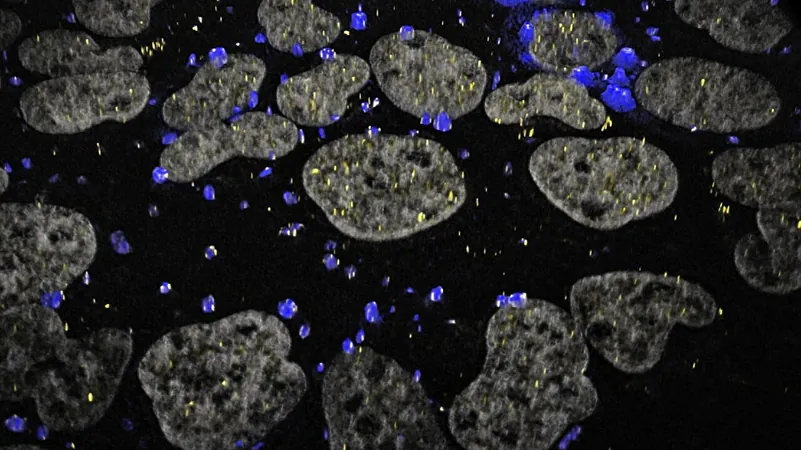
Groundbreaking Discovery: How Cells Avoid RNA Traffic Jams During Stress
2025-08-29
Author: Wei Ling
New Insights Into Cellular Stress Management
A recent study from the University of Michigan has unveiled crucial insights into how cells navigate molecular crises, particularly during stressful conditions.
The Role of RNA and Ribosomes in Stress Responses
Led by Dr. Stephanie Moon, an assistant professor of Human Genetics, the research dives into how healthy cells produce proteins. In normal scenarios, RNA molecules are enveloped by ribosomes, functioning like tiny factories that translate genetic information into essential proteins.
However, during stress—be it heat, toxins, or inflammation—cellular activities, including protein production, come to a halt to facilitate survival. Ribosomes detach from RNA, leading to the clumping of unprotected RNAs into "stress granules," which serve as temporary storage until conditions stabilize.
Emergency mRNAs to the Rescue!
Yet, in the face of stress, some messenger RNAs (mRNAs) must still be expressed to aid recovery and adaptation. Dr. Moon likens these specialized mRNAs to emergency vehicles rushing to the scene of an accident, while the rest are diverted into stress granules.
Cracking the Code: How Certain mRNAs Escape Stress Granules
Prior to this study, the mechanisms allowing specific mRNAs to evade stress granules remained mysterious. While it was suspected that translating these mRNAs could keep them out of stress granules, conflicting studies suggested some translation could even occur within these granules.
The groundbreaking research, led by Ph.D. candidate Noah Helton and published in the journal Genes & Development, reveals that these critical mRNAs avoid getting trapped in stress granules by bonding with ribosomes.
Implications for Neurological Disorders and Cancer
Understanding this "integrated stress response pathway" is vital, especially since disrupted stress granule dynamics are linked to neurological disorders like ALS, cancer, and other chronic stress-related conditions.
The UORF Connection: A Game-Changer for mRNA Protection
The team explored the impact of uORFs (upstream open reading frames)—special sequences at the beginning of certain mRNAs. They suspected these uORFs help recruit ribosomes during stressful times, effectively keeping mRNAs out of danger.
Using advanced techniques like single-molecule imaging and fluorescent proteins, the researchers confirmed their hypothesis: mRNAs with uORFs attract more ribosomes under stress. Remarkably, even one ribosome on an mRNA was enough to prevent it from being ensnared in a stress granule.
Rethinking Ribosome Functionality in mRNA Protection
The study overturns the previous belief that multiple ribosomes were necessary for mRNA protection. As co-author Dr. Benjamin Dodd stated, "Having just one ribosome can shield the mRNA from granule formation, similar to how a single bead on a string can protect it."
Potential for New Treatments and Therapeutics
Moreover, the research emphasizes how minute alterations, such as a 6-nucleotide change in uORF, could lead mRNAs straight into granules. The insights derived from this study could pave the way for groundbreaking treatments aimed at maintaining healthy protein synthesis, especially when cellular stress responses malfunction.




 Brasil (PT)
Brasil (PT)
 Canada (EN)
Canada (EN)
 Chile (ES)
Chile (ES)
 Česko (CS)
Česko (CS)
 대한민국 (KO)
대한민국 (KO)
 España (ES)
España (ES)
 France (FR)
France (FR)
 Hong Kong (EN)
Hong Kong (EN)
 Italia (IT)
Italia (IT)
 日本 (JA)
日本 (JA)
 Magyarország (HU)
Magyarország (HU)
 Norge (NO)
Norge (NO)
 Polska (PL)
Polska (PL)
 Schweiz (DE)
Schweiz (DE)
 Singapore (EN)
Singapore (EN)
 Sverige (SV)
Sverige (SV)
 Suomi (FI)
Suomi (FI)
 Türkiye (TR)
Türkiye (TR)
 الإمارات العربية المتحدة (AR)
الإمارات العربية المتحدة (AR)